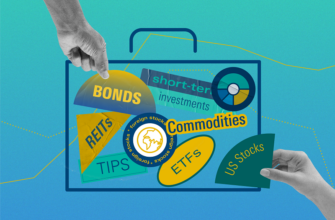Understanding Risk and Return: How to Make Informed Investment Decisions
Investing is a fundamental part of building wealth and securing financial stability. However, investing involves taking risks, and without a proper understanding of risk and return, it can lead to significant losses. To make informed investment decisions, individuals need to comprehend the relationship between risk and return, evaluate their risk tolerance, and employ strategies that align with their financial goals. In this comprehensive guide, we will explore the concepts of risk and return, the different types of investment vehicles, and strategies to help individuals navigate the complex world of investing.
Risk and Return Fundamentals
1.1 Understanding Risk: Risk refers to the uncertainty associated with an investment’s potential outcomes. All investments carry some degree of risk, and it is crucial to understand the different types of risk investors may encounter:
1.1.1 Market Risk: Also known as systematic risk, it is the risk of overall market fluctuations affecting investment returns. Factors such as economic conditions, geopolitical events, and market sentiment can impact investment performance.
1.1.2 Specific Risk: Also called unsystematic risk, it is unique to a particular investment. Specific risk can arise from factors like industry trends, company performance, or regulatory changes that affect a specific investment’s value.
1.1.3 Inflation Risk: Inflation erodes the purchasing power of money over time. Investments that fail to outpace inflation can result in a loss of real value.
1.1.4 Interest Rate Risk: Fluctuations in interest rates can affect the value of fixed-income investments. When interest rates rise, bond prices tend to fall, and vice versa.
1.2 Understanding Return
Return refers to the gains or losses an investment generates over a specific period. It is essential to understand the different components of return:
1.2.1 Capital Gains: The profit obtained from selling an investment for a higher price than its purchase price.
1.2.2 Dividend Income: Some investments, such as stocks, provide regular dividend payments to shareholders, which contribute to overall returns.
1.2.3 Interest Income: Bonds and other fixed-income investments generate interest income, which adds to the overall return.

Evaluating Risk Tolerance
2.1 Assessing Personal Risk Tolerance
Before making investment decisions, it is crucial to assess one’s risk tolerance. Risk tolerance refers to an individual’s willingness and ability to endure fluctuations in the value of their investments. Several factors influence risk tolerance, including:
2.1.1 Time Horizon: The length of time an investor intends to hold an investment can influence risk tolerance. Longer time horizons generally allow for a higher risk tolerance as there is more time to recover from market downturns.
2.1.2 Financial Situation: An individual’s financial stability and obligations impact their risk tolerance. Those with stable income and fewer financial obligations may be more willing to take on higher-risk investments.
2.1.3 Investment Goals: The specific goals an investor aims to achieve will affect their risk tolerance. Goals such as saving for retirement or funding a child’s education may require a more conservative approach, while long-term wealth accumulation goals may allow for greater risk-taking.
2.2 Diversification: Managing Risk through Portfolio Allocation
Diversification is a risk management strategy that involves spreading investments across various asset classes, industries, and geographic regions. By diversifying their portfolios, investors aim to reduce the impact of any single investment’s poor performance on their overall portfolio. Diversification can be achieved through:
2.2.1 Asset Allocation: Allocating investments across different asset classes, such as stocks, bonds, real estate, and commodities.
2.2.2 Geographic Diversification: Investing in securities from different countries and regions to minimize the risk associated with a specific market or economy.
2.2.3 Sector Diversification: Spreading investments across different sectors or industries to reduce the impact of a downturn in any particular sector.

Investment Strategies for Informed Decisions
3.1 Fundamental Analysis
Fundamental analysis involves evaluating an investment’s intrinsic value by examining factors such as financial statements, industry trends, competitive positioning, and management quality. By conducting thorough research, investors can identify undervalued or overvalued investments and make informed decisions based on their findings.
3.2 Technical Analysis
Technical analysis involves analyzing historical price and volume data to predict future price movements. It relies on chart patterns, technical indicators, and other tools to identify trends and patterns in market data. While technical analysis is not foolproof, it can provide valuable insights into short-term price movements.
3.3 Dollar-Cost Averaging
Dollar-cost averaging is an investment strategy that involves regularly investing a fixed amount of money into a particular investment, regardless of its price. This approach helps mitigate the impact of market volatility by purchasing more shares when prices are low and fewer shares when prices are high. Over time, this strategy can result in a lower average cost per share.
3.4 Buy and Hold
Buy and hold is a long-term investment strategy where investors buy securities and hold them for an extended period, regardless of short-term market fluctuations. This strategy capitalizes on the potential for long-term growth and reduces transaction costs associated with frequent buying and selling.
Conclusion
Making informed investment decisions requires a comprehensive understanding of risk and return. By evaluating personal risk tolerance, diversifying portfolios, and employing effective investment strategies, individuals can navigate the complex investment landscape with confidence. Remember, investing involves risks, and it is essential to conduct thorough research, seek professional advice when needed, and stay informed about market trends and economic conditions. With careful planning and a disciplined approach, individuals can increase their chances of achieving their financial goals and building long-term wealth.








